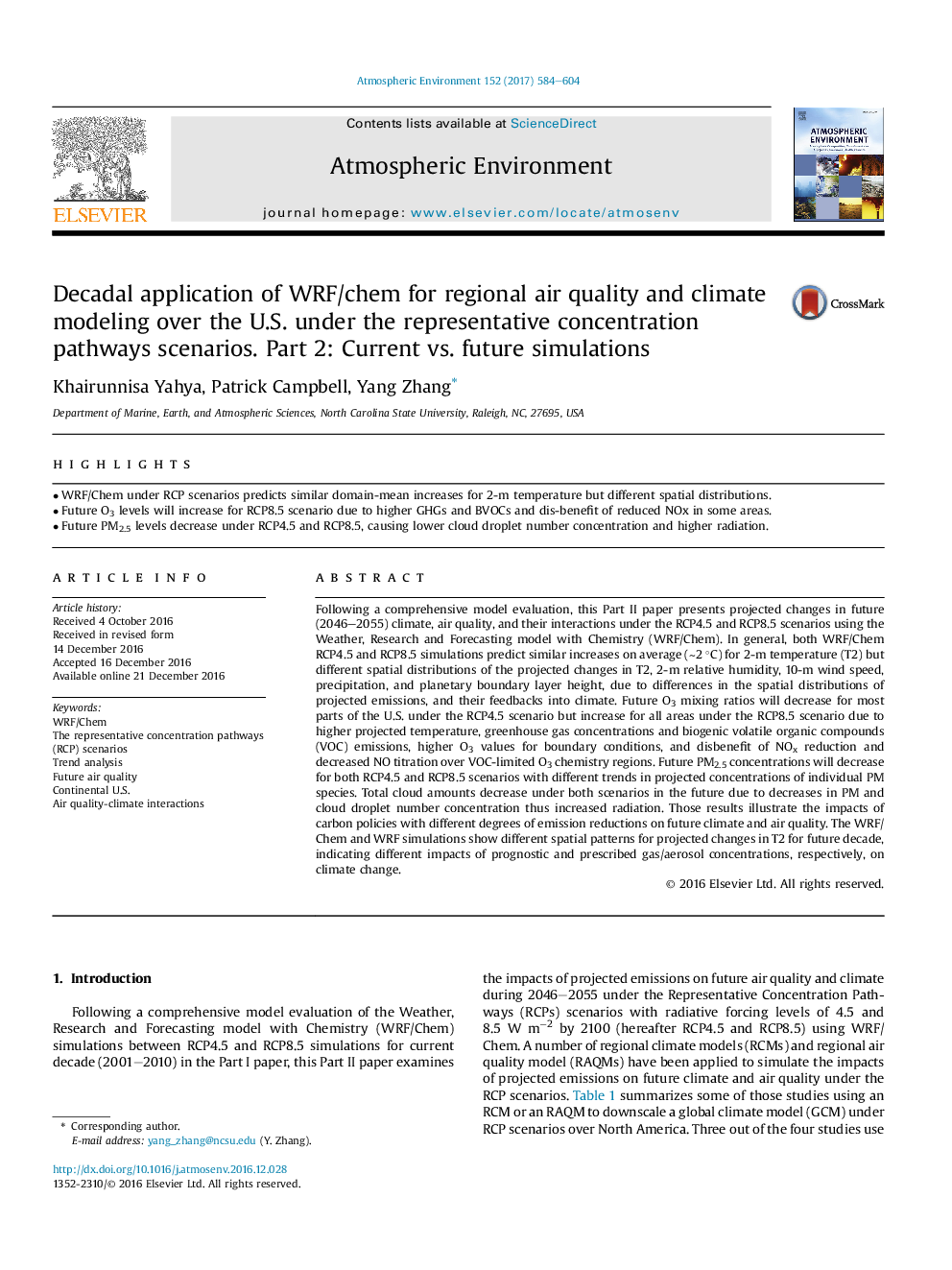| کد مقاله | کد نشریه | سال انتشار | مقاله انگلیسی | نسخه تمام متن |
|---|---|---|---|---|
| 5753428 | 1620322 | 2017 | 21 صفحه PDF | دانلود رایگان |

- WRF/Chem under RCP scenarios predicts similar domain-mean increases for 2-m temperature but different spatial distributions.
- Future O3 levels will increase for RCP8.5 scenario due to higher GHGs and BVOCs and dis-benefit of reduced NOx in some areas.
- Future PM2.5 levels decrease under RCP4.5 and RCP8.5, causing lower cloud droplet number concentration and higher radiation.
Following a comprehensive model evaluation, this Part II paper presents projected changes in future (2046-2055) climate, air quality, and their interactions under the RCP4.5 and RCP8.5 scenarios using the Weather, Research and Forecasting model with Chemistry (WRF/Chem). In general, both WRF/Chem RCP4.5 and RCP8.5 simulations predict similar increases on average (â¼2 °C) for 2-m temperature (T2) but different spatial distributions of the projected changes in T2, 2-m relative humidity, 10-m wind speed, precipitation, and planetary boundary layer height, due to differences in the spatial distributions of projected emissions, and their feedbacks into climate. Future O3 mixing ratios will decrease for most parts of the U.S. under the RCP4.5 scenario but increase for all areas under the RCP8.5 scenario due to higher projected temperature, greenhouse gas concentrations and biogenic volatile organic compounds (VOC) emissions, higher O3 values for boundary conditions, and disbenefit of NOx reduction and decreased NO titration over VOC-limited O3 chemistry regions. Future PM2.5 concentrations will decrease for both RCP4.5 and RCP8.5 scenarios with different trends in projected concentrations of individual PM species. Total cloud amounts decrease under both scenarios in the future due to decreases in PM and cloud droplet number concentration thus increased radiation. Those results illustrate the impacts of carbon policies with different degrees of emission reductions on future climate and air quality. The WRF/Chem and WRF simulations show different spatial patterns for projected changes in T2 for future decade, indicating different impacts of prognostic and prescribed gas/aerosol concentrations, respectively, on climate change.
Journal: Atmospheric Environment - Volume 152, March 2017, Pages 584-604